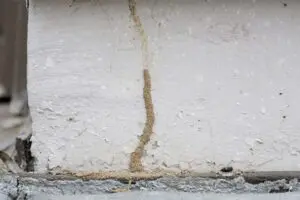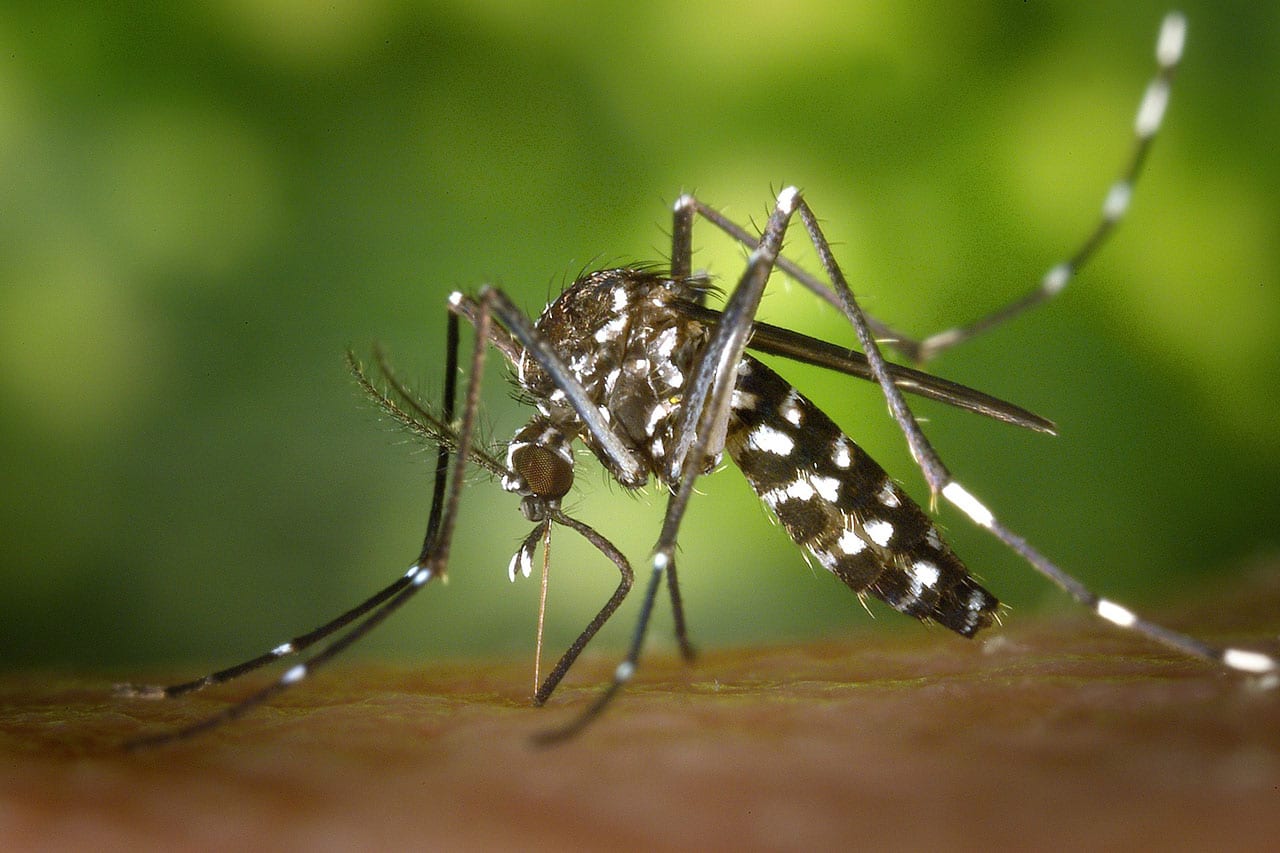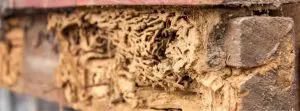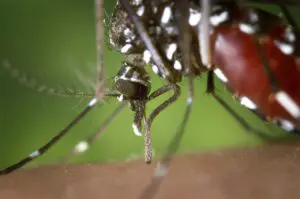

The Beginning: From Egg to Larva
The mosquito life cycle starts with the laying of eggs by adult female mosquitoes. These eggs are usually deposited in or close to water which provides the necessary environment for mosquito development. Species dependent, mosquito eggs are laid in clusters or singly, and they are able to withstand drying out for a period of time. This ensures their survival until they are submerged in water.
Once mosquito eggs are submerged in water, they begin to hatch into larvae within just a few days. This stage of the mosquito life cycle is known as the larval phase and is vital to the growth and development of mosquitoes. Mosquito larvae are also commonly referred to as “wigglers” because, as this nickname suggests, they present with wriggly movement while in water. During this phase of the mosquitoes life cycle, the larvae feed on organic matter and microorganisms that are present in the water, ensuring quick growth as they molt through various instars.
Larval Dynamics: Navigating the Aquatic Phase
In the life cycle of a mosquito, the aquatic phase is a dynamic time that is marked by significant growth and development. Mosquito larvae are built for life in water and possess siphon tubes for breathing as well as brushes for filter-feeding. In this phase, they spend the majority of their time near the water's surface as they can access oxygen and feed on surface films and particles.
As these wriggly larvae grow, they molt a variety of times, shedding their exoskeletons to accommodate their increasing size. Each of these molts represents a new instar, with larvae undergoing several before reaching adulthood. When it comes to the question “what is the life cycle of a mosquito?,” it is important to recognise times of danger - and during this phase in the life cycle of a mosquito, larvae are vulnerable to predation and environmental factors which makes suitable habitat conditions essential for their survival.
Pupal Metamorphosis
The final stage of the mosquito life cycle is the pupal stage, marking the transition from aquatic larvae to terrestrial adults. Also known as "tumblers,"pupal are non-feeding and immobile, but are highly active internally as they undergo a vast metamorphosis. Inside the pupal case, the wriggling larvae undergo a wondrous transformation and restructure their bodies to prepare for life as adults.
Metamorphosis during the pupal stage involves the development of adult mosquito features, including wings, legs, and mouthparts. This transformation usually takes a few days to complete and depends on environmental conditions such as temperature and water quality. Once metamorphosis is finished, adult mosquitoes emerge from the pupal case and make their way to the water's surface, where they rest for a moment before flying away to begin their search for a meal and mate.
The pupal stage is an important transition in the mosquito life cycle, representing the culmination of aquatic development and the onset of adulthood. From egg to larva to pupa, each stage of the lifecycle of a mosquito plays an important role in the perpetuation of these insects.
Understanding the dynamics of mosquito life cycle time is essential for implementing effective mosquito control strategies and minimizing their impact on humans.
Emerging into Adulthood
The life cycle of a mosquito culminates in the emergence of adult mosquitoes. Once pupal metamorphosis is complete, adult mosquitoes break free from their pupal cases and emerge to the surface of the water. This usually occurs at dusk or dawn, when environmental conditions are optimal for their survival. As stated previously, adult mosquitoes need to rest briefly on the water's surface and this is because they need to allow their wings to dry and harden before they take flight.
Upon breaking the water's surface, adult mosquitoes begin their search for mates and blood meals. Male mosquitoes typically feed on plant nectar, while female mosquitoes require a blood meal in order to develop eggs. The lifespan of adult mosquitoes also varies depending on factors such as species, environmental conditions, and resources. Some species of mosquitoes may live for just a few days, while others can survive for weeks or even months under good conditions.
Understanding the Significance of Mosquito Life Cycle Time
As seen previously, the mosquito life cycle consists of four stages: egg, larva, pupa, and adult. The length of each phase in the life cycle of a mosquito can vary depending on factors such as temperature, humidity, and food availability. But in general terms the entire mosquito life cycle time from egg to adult can be completed in as little as a week.
Understanding the mosquitoes life cycle timing is crucial for implementing effective mosquito control measures. By monitoring environmental conditions and tracking the progression of mosquito development, pest control professionals can anticipate mosquito activity and implement targeted interventions to reduce mosquito populations and minimize their impact.
Environmental Influences on the Mosquito Life Cycle
External factors play a significant role in shaping the progression of the life cycle of a mosquito. Temperature, humidity, rainfall, and availability of breeding sites all have an influence on the development and survival of mosquito larvae and pupae.
Warm temperatures accelerate mosquito development and shorten the time it takes for eggs to hatch and larvae to grow into adults. On the other hand, cold temperatures can slow down mosquito development, prolonging the duration of each life cycle stage. Fluctuations in humidity and rainfall can also affect mosquito breeding habitats, altering the availability of standing water and influencing mosquito population dynamics.Human activities also play a role in the mosquito life cycle. Human activities such as urbanization and land development impact the mosquito life cycle by changing habitat suitability and creating new breeding sites.
With the above in mind, by addressing environmental influences, we can work towards reducing mosquito populations and creating safer, healthier communities.
Reproductive Rituals: The Culmination of the Mosquito Life Cycle
As the mosquito life cycle nears its end, reproductive rituals play a significant role. Once emerging from the water as adults, female mosquitoes seek out mates to fertilize their eggs. This search often involves intricate behaviors, including the production of species-specific mating calls and interesting “courtship dances.”
Upon successful mating, female mosquitoes require a blood meal to nourish their developing eggs. When it comes to this feeding process, females make use of specialized mouthparts to pierce the skin of hosts and feed on blood. This meal provides essential nutrients for egg development and ensures the continuation of the mosquito life cycle.
Nurturing New Generations: Continuation of the Mosquito Life Cycle
Mosquitoes' life cycle results in the generation of new mosquitoes through a series of reproductive events. After getting a blood meal, female mosquitoes lay their eggs in water or in areas prone to water. Depending on the species, mosquito eggs may be laid individually or in clusters, and they can hatch within a few days to several weeks, depending on environmental conditions.
And the process begins again.
Ecological Impact of the Mosquito Life Cycle
The mosquito life cycle has a greater ecological impact on ecosystems. Mosquitoes play important roles as pollinators and prey for various organisms, contributing to ecosystem functioning and biodiversity. However, their role as vectors of diseases such as malaria, dengue fever, and Zika virus also poses significant challenges for human health and well-being.
Mosquito larvae also serve as food sources for aquatic organisms, while adult mosquitoes
provide sustenance for birds, bats, and other insectivores. Thus, fluctuations in mosquito populations can have effects throughout the food web.
Understanding the ecological implications of the mosquito life cycle is crucial for managing mosquito populations sustainably and mitigating the spread of mosquito-borne diseases. By considering the interconnectedness of ecosystems, we can develop holistic approaches to mosquito control that balance human health concerns with environmental conservation efforts
Navigating the Mosquito Life Cycle
The question many ask is “what is the life cycle of a mosquito?” but it is important to understand how this information can help in mitigating the impact of mosquitoes on human populations.
Understanding mosquitoes' life cycle is crucial for effective pest control and management. From egg to adult, each stage presents opportunities for intervention to disrupt the cycle and reduce mosquito populations. Excel Pest Services offers comprehensive solutions to navigate the complexities of the mosquito life cycle, ensuring your outdoor spaces remain comfortable and mosquito-free.
At Excel Pest Service, we present a solution in the form of targeted mosquito pest control that ensures your space remains mosquito-free.
Excel Pest Services offers expertise and eco-consciousness to combat mosquito infestations effectively. Our team understands the significance of responsible pest management, offering services that prioritize your well-being without compromising the delicate ecological balance.
By delving into the intricacies of the mosquito life cycle, Excel Pest Services identifies key intervention points to disrupt breeding and reduce mosquito populations. From larval control measures to adult mosquito treatments, our services are tailored to address each stage of the life cycle, ensuring comprehensive pest control solutions.
Our targeted mosquito pest control strategies utilize environmentally friendly products and methods to minimize impact on non-target organisms and ecosystems. Whether through larvicide applications, habitat modification, or adult mosquito treatments, we employ a strategic approach to effectively manage mosquito populations while safeguarding environmental health.
Excel Pest Services offers effective strategies for navigating the mosquito life cycle and banishing bloodthirsty pests from your outdoor spaces. With our expertise and eco-conscious practices, we ensure that your environment remains comfortable and enjoyable, allowing you to make the most of outdoor activities without the nuisance of mosquito infestations. Contact Excel today for more information anytime.






